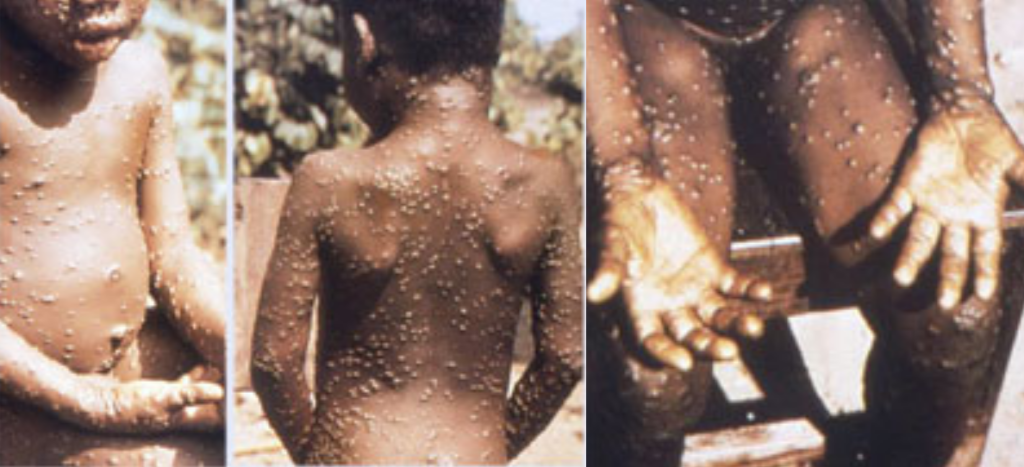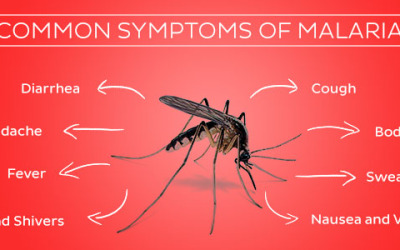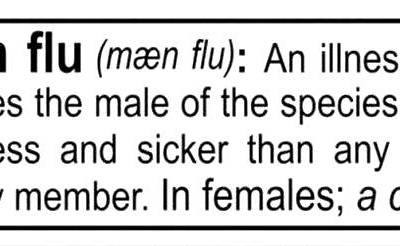Monkeypox is caused by the monkeypox virus, a member of the same family of viruses as smallpox, although it is much less severe and experts say chances of infection are low.
This is the first time the disease has been seen in the UK.
It occurs mostly in remote parts of central and west African countries, near tropical rainforests.
There are two main strains of virus – west African and central African.
Two of the infected patients in the UK travelled from Nigeria, so it is likely that they are suffering from the West African strain of the virus, which is generally mild, but this is as yet unconfirmed.
The third case was a healthcare worker who picked up the virus from one of the patients.
What are the symptoms?
Initial symptoms include fever, headaches, swellings, back pain, aching muscles and a general listlessness.
Once the fever breaks a rash can develop, often beginning on the face, then spreading to other parts of the body, most commonly the palms of the hands and soles of the feet.
The rash, which can be extremely itchy, changes and goes through different stages before finally forming a scab, which later falls off. The lesions can cause scarring.
The infection usually clears up on its own and lasts between 14 and 21 days.
How do you catch it?
Monkeypox can be spread when someone is in close contact with an infected person. The virus can enter the body through broken skin, the respiratory tract or through the eyes, nose or mouth.
It can also be spread by contact with infected animals such as monkeys, rats and squirrels, or by virus-contaminated objects, such as bedding and clothing.
How dangerous is it?
Most cases of the virus are mild, sometimes resembling chickenpox, and clear up on their own within a few weeks.
Monkeypox can sometimes be more severe, however, and has been reported to have caused deaths in west Africa.
How common are outbreaks?
The virus was first identified in a captive monkey and since 1970 there have been sporadic outbreaks reported across 10 African countries.
In 2003 there was an outbreak in the USA, the first time the disease had been seen outside of Africa. Patients caught the disease from close contact with prairie dogs that had been infected by a variety of small mammals imported into the country. A total of 81 cases were reported, but none resulted in deaths.
In 2017, Nigeria experienced the largest documented outbreak, approximately 40 years after the country had its last confirmed cases of monkeypox. There were 172 suspected cases of monkeypox, and 75% of victims were males aged between 21 and 40 years old.
What is the treatment?
There is no treatment for monkeypox, but outbreaks can be controlled by infection prevention.
Vaccination against smallpox has been proven to be 85% effective in preventing monkeypox, and is still sometimes used.
Sources: PHE England and World Health Organization.










